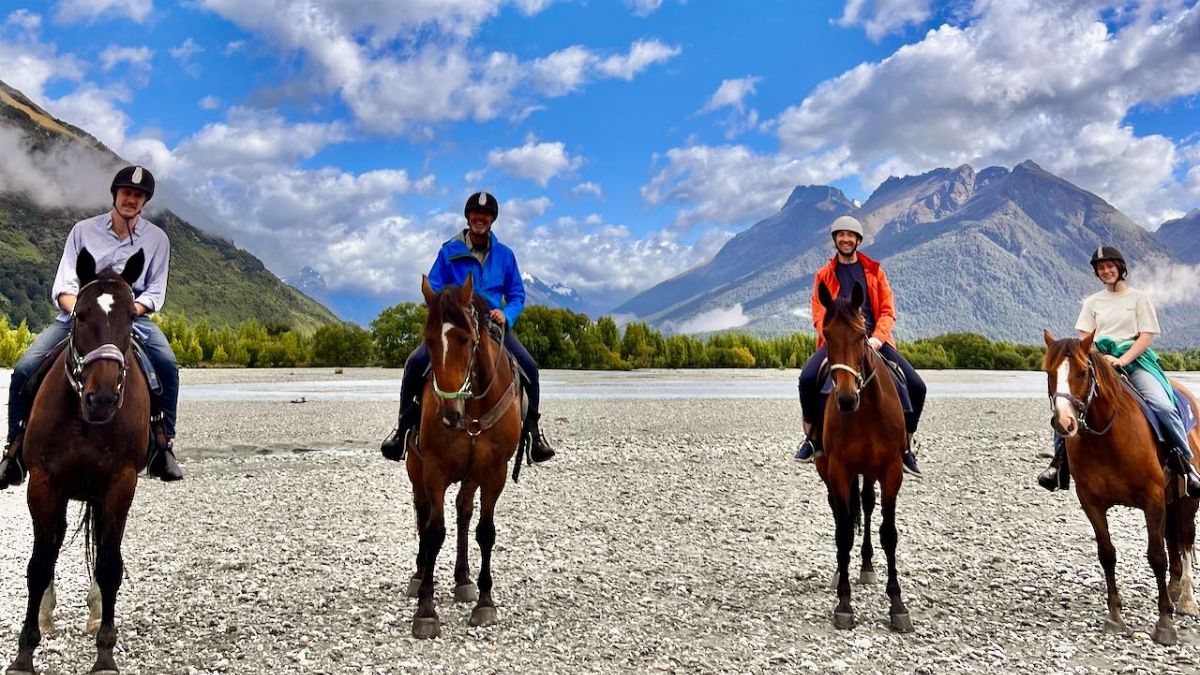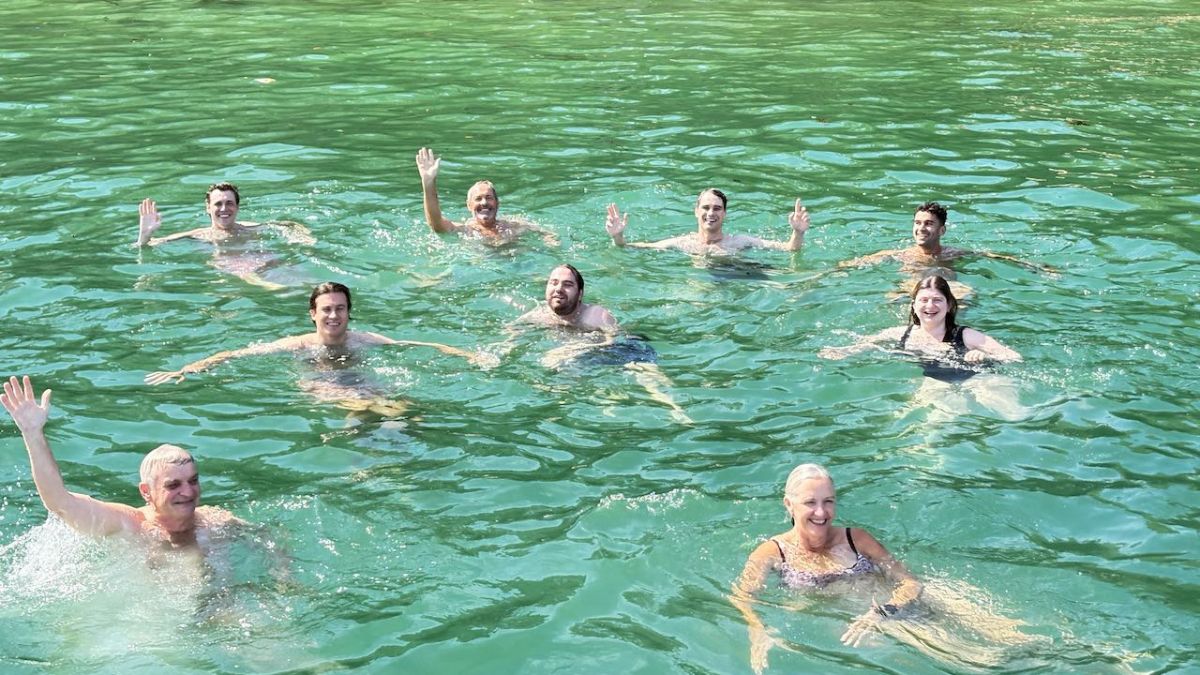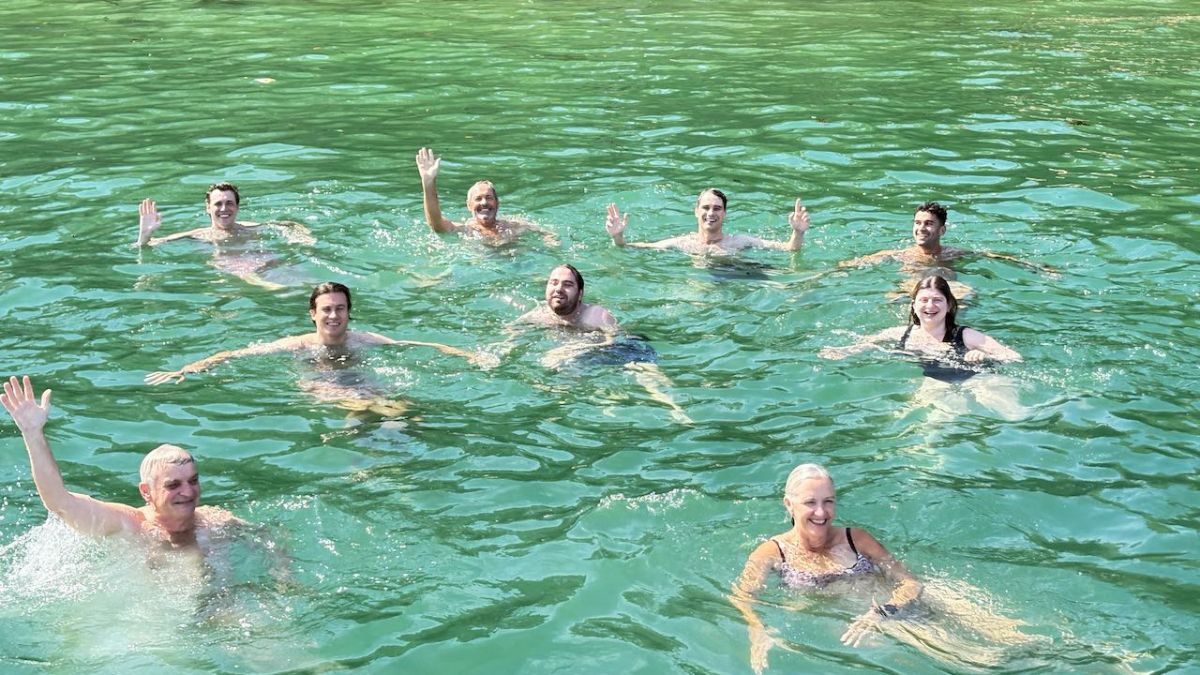The Ultimate Investment: The Art of Building a Life That Lasts
In the world of entrepreneurship, we are architects of the future. We build business plans that stretch out for five, ten, or more years. We talk about legacy, about creating businesses that will outlast us, that will make a lasting mark on our industry and our community. We are, by nature, long-term thinkers. Yet I often find myself racing. Always working. Then I hit a certain birthday milestone and suddenly everything changed. I realised that there are so many people who depend on me. I make a contribution in so many different ways - including my philanthropic work. And if I do not take some time for myself I will not be able to look after others. It came as a shock.
But I want to ask you a brutally honest question. As you meticulously plan the long-term health of your business, what are you doing to plan for the long-term health of its most critical asset?
I’m talking about you.
There is a profound and dangerous paradox at the heart of the traditional founder narrative. It’s the story of the hustle, the grind, the 100-hour work weeks. It’s the story of sacrificing sleep, nutrition, relationships, and personal wellbeing on the altar of the business. We tell ourselves it’s a temporary sacrifice, a necessary price to pay for future success. We wear our burnout as a badge of honour.

I have lived this. I have pushed myself to the absolute limit building RedBalloon. I have sat in the Shark Tank and seen the exhaustion in the eyes of brilliant founders who were running on fumes. And I have learned, through my own journey and from mentoring countless others, that this model is not just unsustainable; it is strategically bankrupt.
What is the point of building a legacy if you are too exhausted, too unwell, or simply not around to see it flourish?
This line of thinking has been at the forefront of my mind for years, but it was recently supercharged by a book I simply could not put down. It’s called the Longevity Guidebook, and it’s written by a man I deeply admire, Dr. Peter H. Diamandis. Peter is a unique force of nature—a Harvard-trained medical doctor, a rocket scientist, and one of the world's most prescient futurists. His book is a wake-up call. It's an operating manual for the human body in the 21st century, packed with cutting-edge science on how to slow, stop, and even reverse ageing.
Reading it, I wasn’t just thinking as a person; I was thinking as an entrepreneur. Peter's work provides a powerful framework for what I believe is the ultimate strategic pivot for any ambitious leader: shifting from being just the CEO of your business to becoming the CEO of your own Health Inc.
This is not a distraction from your business. This is the single most important investment you can make in your business. Because your energy, your clarity of thought, your resilience, and your sheer number of productive years on this planet are the real drivers of your success.
So, let's go beyond the biohacking fads and the wellness trends. This is my definitive guide, inspired by the science but grounded in the reality of a founder's life, on how to build a business and a life that are designed not just to succeed, but to endure.
The Founder's Healthspan Portfolio - A New Framework for a Longer, Better Life
As business leaders, we understand the concept of a balanced portfolio. You don't put all your money into one stock. You diversify. You manage risk. You invest for long-term, compounding growth. I want you to apply that same strategic mindset to your own longevity.
Your "Healthspan Portfolio" is not about a single magic pill or a perfect diet. It's a diversified, long-term strategy built on four essential pillars.

Your Mindset is Your Ultimate Asset
This is the bedrock upon which everything else is built. Before you change a single habit, you must first change your beliefs. Your mindset about your own health and your future is the single most powerful determinant of your actions.
In his book, Peter talks about the concept of "longevity escape velocity"—the idea that science and technology are advancing so fast that, in the near future, for every year you stay alive and healthy, science will be able to extend your life by more than a year. He quotes futurist Ray Kurzweil, who believes we may reach this point by the end of 2030.
This is a breathtaking idea. It reframes our entire concept of ageing. It shifts it from an inevitable decline to a treatable, manageable condition. It transforms our goal from simply "growing old gracefully" to Peter's ambitious vision of "making 100 the new 60."
But this isn't just about futuristic technology. It's about the power of your own purpose. Peter shares a powerful historical anecdote that resonated with me deeply. In the early 1800s, the average life expectancy was just 44 years old. Yet, two of America's founding fathers, Thomas Jefferson and John Adams, willed themselves to live long enough to see the 50th anniversary of the Declaration of Independence. Against all odds, they both died on that exact day—July 4, 1826. Jefferson was 83, and Adams was 90. They had a purpose so powerful, a future so compelling, that it literally kept them alive.
This is the first and most critical investment in your portfolio: cultivating a powerful, purpose-driven longevity mindset.
- What is your "why" for living a long, healthy life? Is it to see your children and grandchildren thrive? Is it to bring another great business idea to life? Is it to travel the world and learn a new skill? You must have a vision for your future that is bigger and more exciting than your past.
- Curate your inputs. What media are you consuming? Are you reading stories of decline and disease, or are you actively seeking out information on health, vitality, and possibility? Your mind is a garden; you must be ruthless about pulling the weeds of pessimism and planting the seeds of optimism.
You Are the CEO of Your Own Health Inc.
Once your mindset is in place, you must adopt the role of CEO of your own body. A good CEO does not run their business on guesswork. They are data-driven. They "know their numbers." They conduct regular due diligence to identify risks and opportunities. You must do the same for your health.
One of the most powerful and confronting ideas in Peter's book is captured in the title of one of his chapters: "Don't Die from Something Stupid." He points out that our bodies are masterful at hiding disease until it is often too late. Seventy percent of heart attacks have no prior symptoms. Most cancers show no symptoms until they reach stage 3 or 4.
As a CEO, ignorance is not a defense. It is a failure of leadership. The good news, as Peter outlines in incredible detail, is that we now have the advanced diagnostic tools to look inside our bodies with a level of clarity that was unimaginable even a decade ago.
Your job as the CEO of your health is to move from a reactive "sick-care" model (waiting until you have a symptom to see a doctor) to a proactive, preventative "health-care" model.
- Know Your Numbers: This means going beyond a simple annual check-up. It's about understanding your key biomarkers through regular blood tests, knowing your genetic predispositions, and using advanced imaging to get a clear picture of what's happening inside.
- Create Your Health Dashboard: Just as you have a dashboard for your business's KPIs, you should have one for your health. What are your key metrics for sleep, fitness, nutrition, and key biomarkers? Track them. What you can measure, you can manage.
- Proactive Risk Management: When you identify a potential risk—whether it's high cholesterol, inflammation, or early signs of plaque in your arteries—you can take early, preventative action. This is the ultimate form of risk management.
Taking responsibility for your own health data is the ultimate act of taking control. It is a commitment to not dying from something stupid.

Build Your 'Personal Board of Health
I have long been an advocate for every founder having a "personal board of directors"—a group of mentors and advisors to guide their business. To be the CEO of your health, you need a similar structure. Great leaders do not operate in a vacuum; they surround themselves with people who are smarter than them.
- Your Expert Team: This is not just your local GP. This is about assembling a team of experts who are on the cutting edge of preventative and functional medicine. You are the CEO, but they are your executive team, your trusted advisors who can help you interpret the data and create a personalised action plan.
- Your Community: Peter's book touches on the science of "Blue Zones"—the regions of the world where people live the longest, healthiest lives. One of the common denominators in all these zones is a strong, supportive community. The people you spend time with have a profound impact on your health behaviours and your mindset. Are you surrounding yourself with people who are optimistic, who prioritize their health, who are active and engaged in life? Your social circle is a powerful health intervention.
Building this web of connection is a critical investment. You cannot, and should not, do this journey alone.
Invest in Daily Compounding Habits
This is where the strategy becomes a daily reality. The greatest returns in your Healthspan Portfolio will not come from a single, dramatic intervention. They will come from the small, consistent, daily habits that compound over years and decades.
Peter's book is a masterclass in the science behind these habits, covering nutrition, exercise, and sleep in incredible detail. The key is not to get overwhelmed, but to start with small, consistent "investments."
- Your Nutrition "Investment Thesis": This is about moving from random eating to a conscious nutritional strategy. It's not about a fad diet; it's about adopting core principles—like minimising sugar and processed foods, as Peter advocates—that you can stick to for life.
- Your Exercise "Portfolio": A balanced portfolio includes "investments" in strength (resistance training), stability (balance and flexibility), and cardiovascular health (Zone 2 and VO2 Max training). Consistency here is far more important than intensity. A 30-minute walk every day is infinitely more valuable than a brutal two-hour gym session once a month.
- Sleep is Your "Non-Negotiable Asset": As entrepreneurs, we have worn sleep deprivation as a badge of honour for far too long. The science is now undeniable: sleep is the most powerful performance-enhancing, health-extending activity you can do. Prioritizing 7-8 hours of high-quality sleep is not an indulgence; it is a non-negotiable strategic imperative.
Your Healthspan is Your Greatest Legacy

As an entrepreneur, your greatest assets are your energy, your creativity, your resilience, and your clarity of thought. All of these are a direct output of your physical and mental wellbeing. A burnt-out, unhealthy founder cannot lead a thriving, innovative, and resilient company. It is an impossible equation.
Investing in your healthspan is not something you do after you've become successful. It is the foundational work you must do to become, and remain, successful. It is the ultimate investment in your business, your family, and your future.
Peter Diamandis's Longevity Guidebook is a powerful, data-driven, and deeply optimistic roadmap for what is possible. It is a call to action to take control of our biology and to design a future that is longer, healthier, and more vibrant than we ever imagined.
It’s time to stop treating your health as an afterthought. It’s time to step up and take on the most important CEO role you will ever have. Your legacy depends on it.
What is the one single investment you will make in your "Healthspan Portfolio" this week? Will it be scheduling a proper health assessment, blocking out time for exercise, or committing to a better sleep routine?






